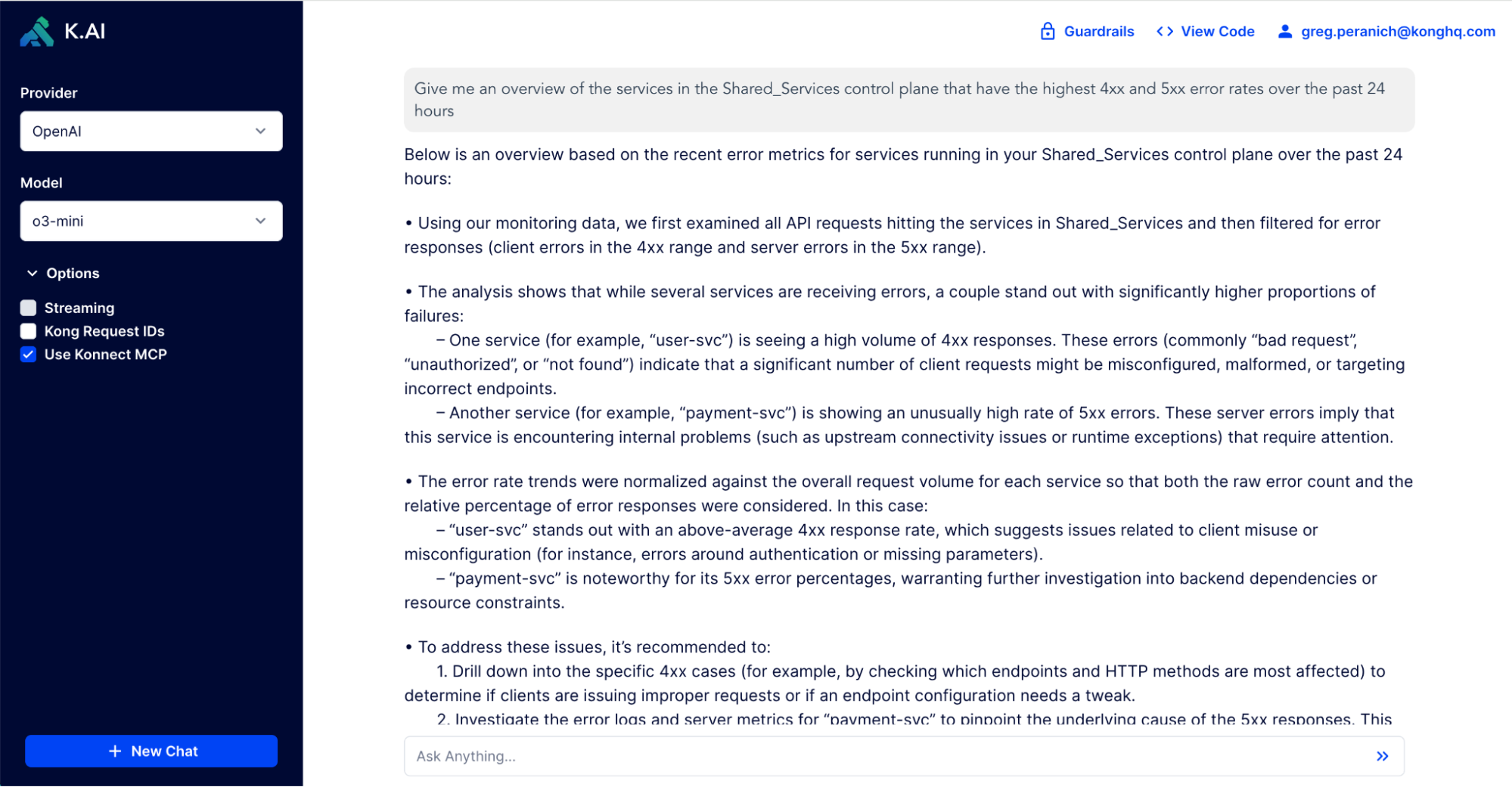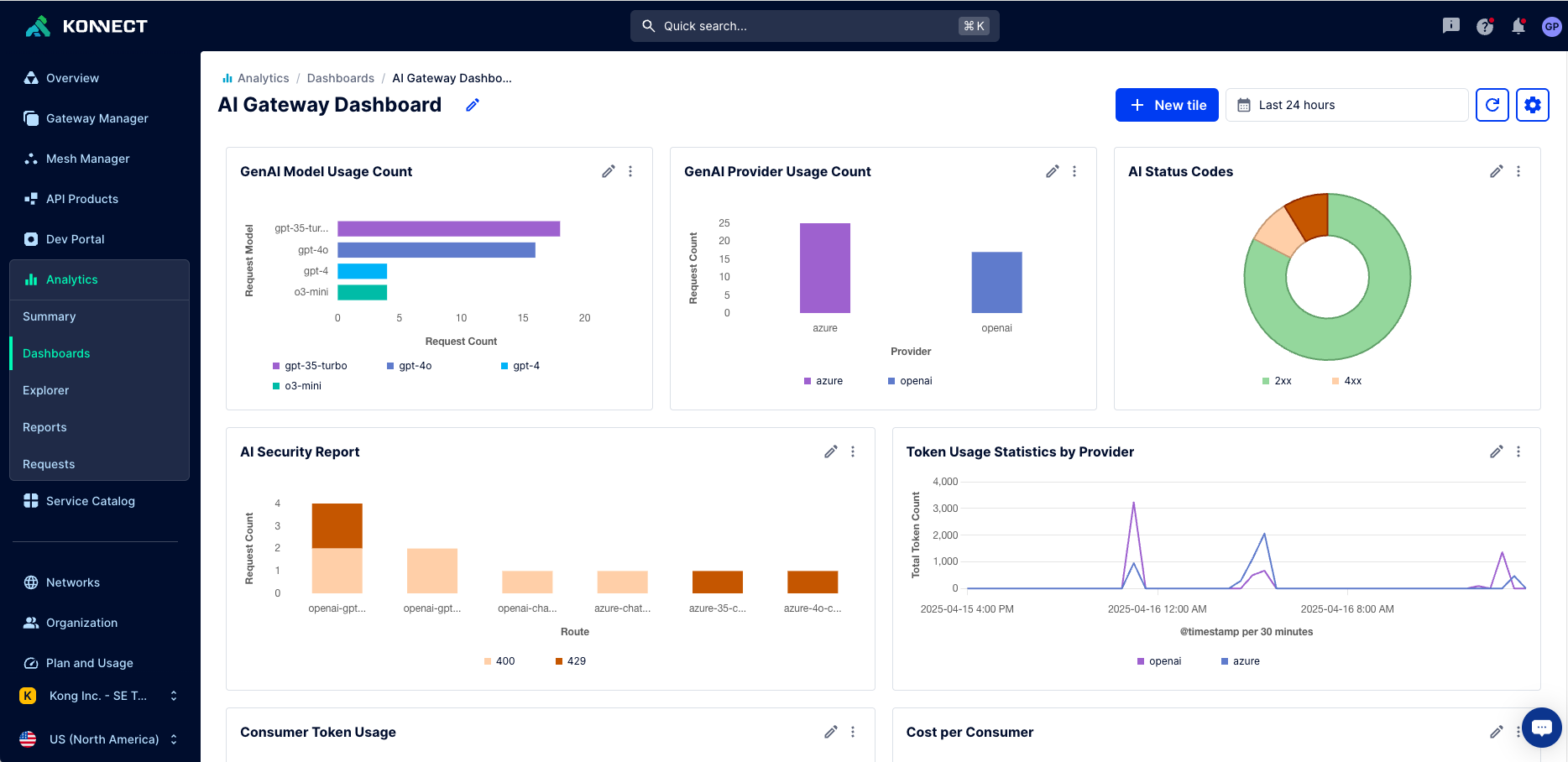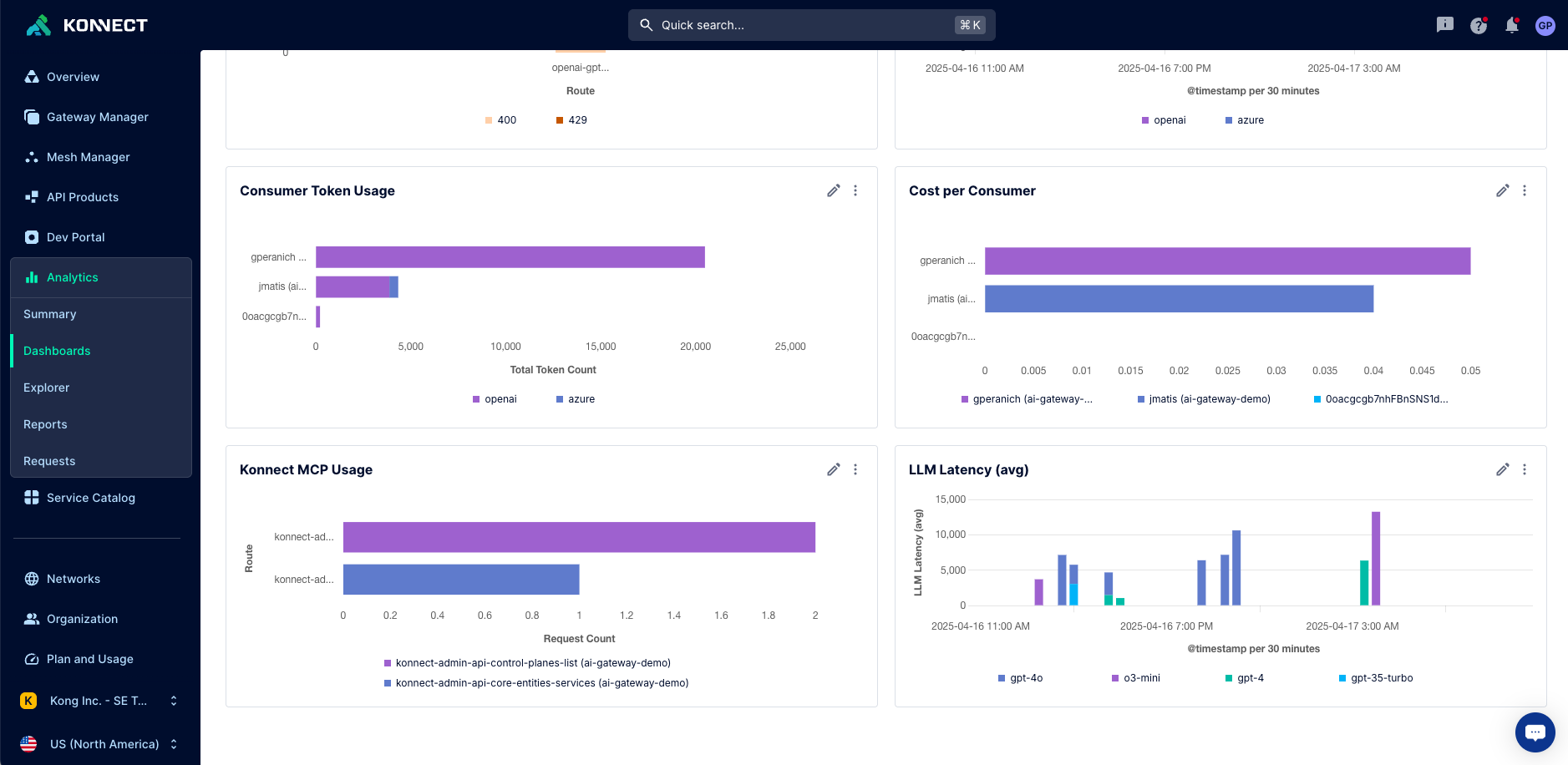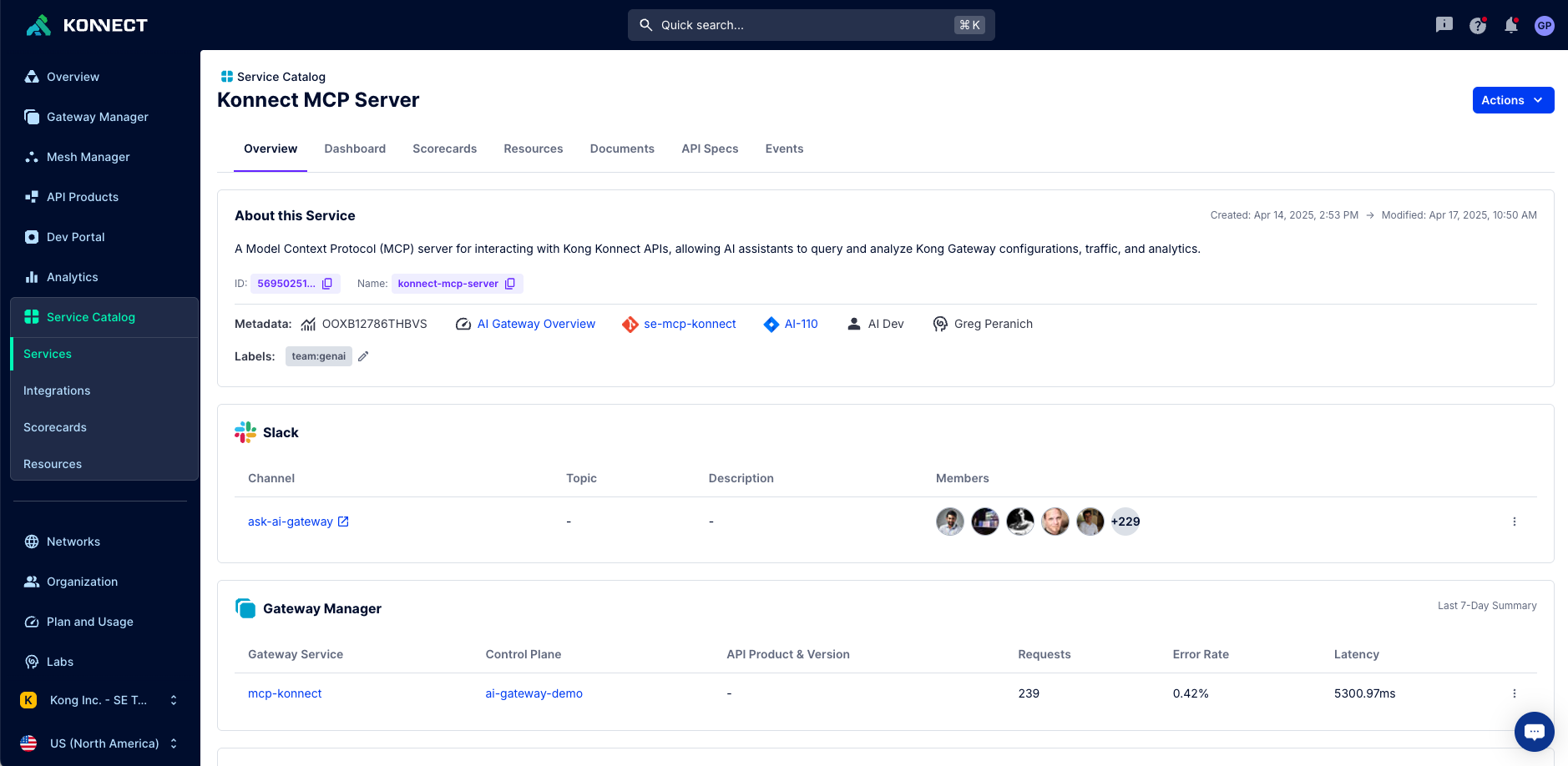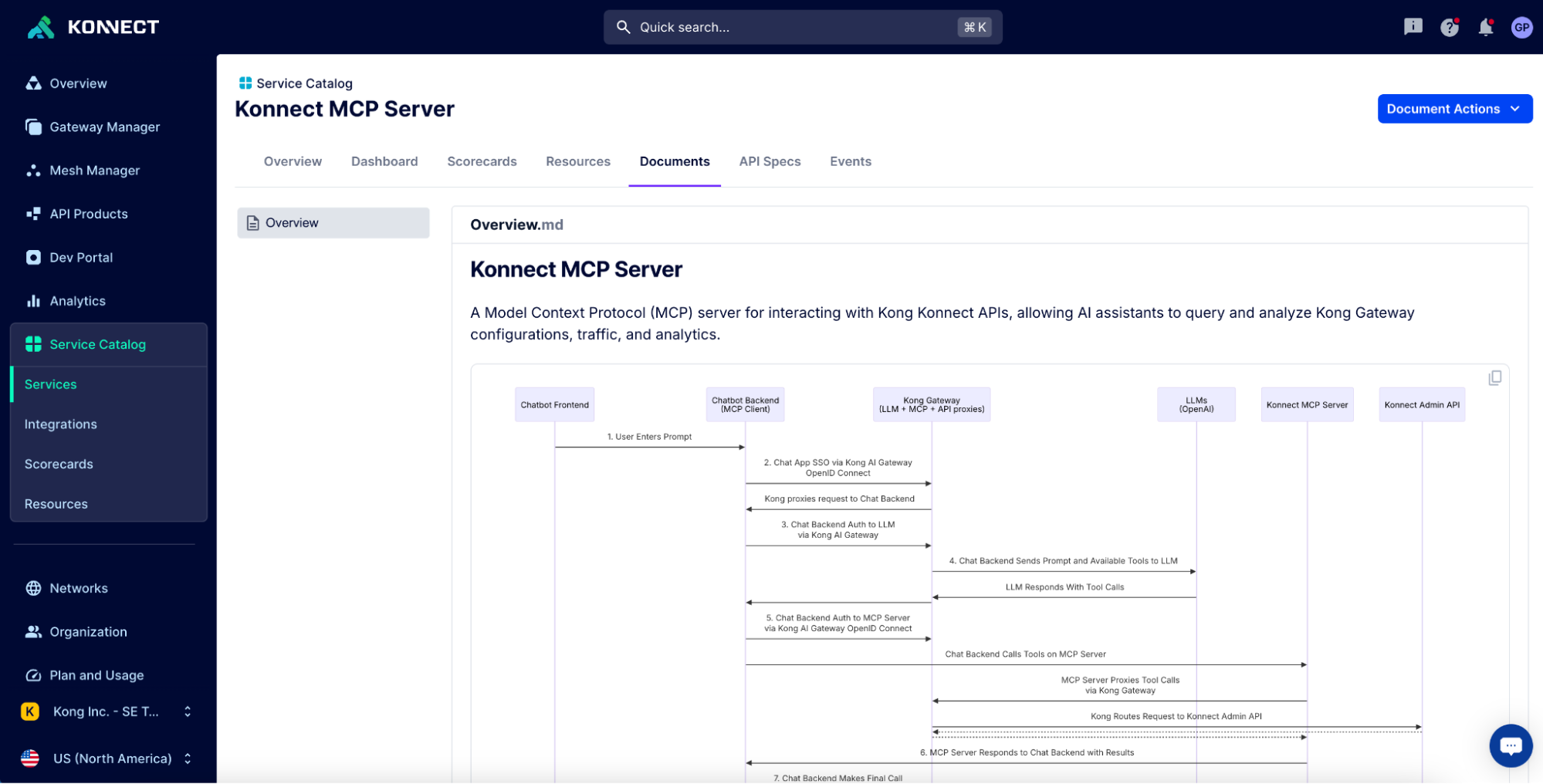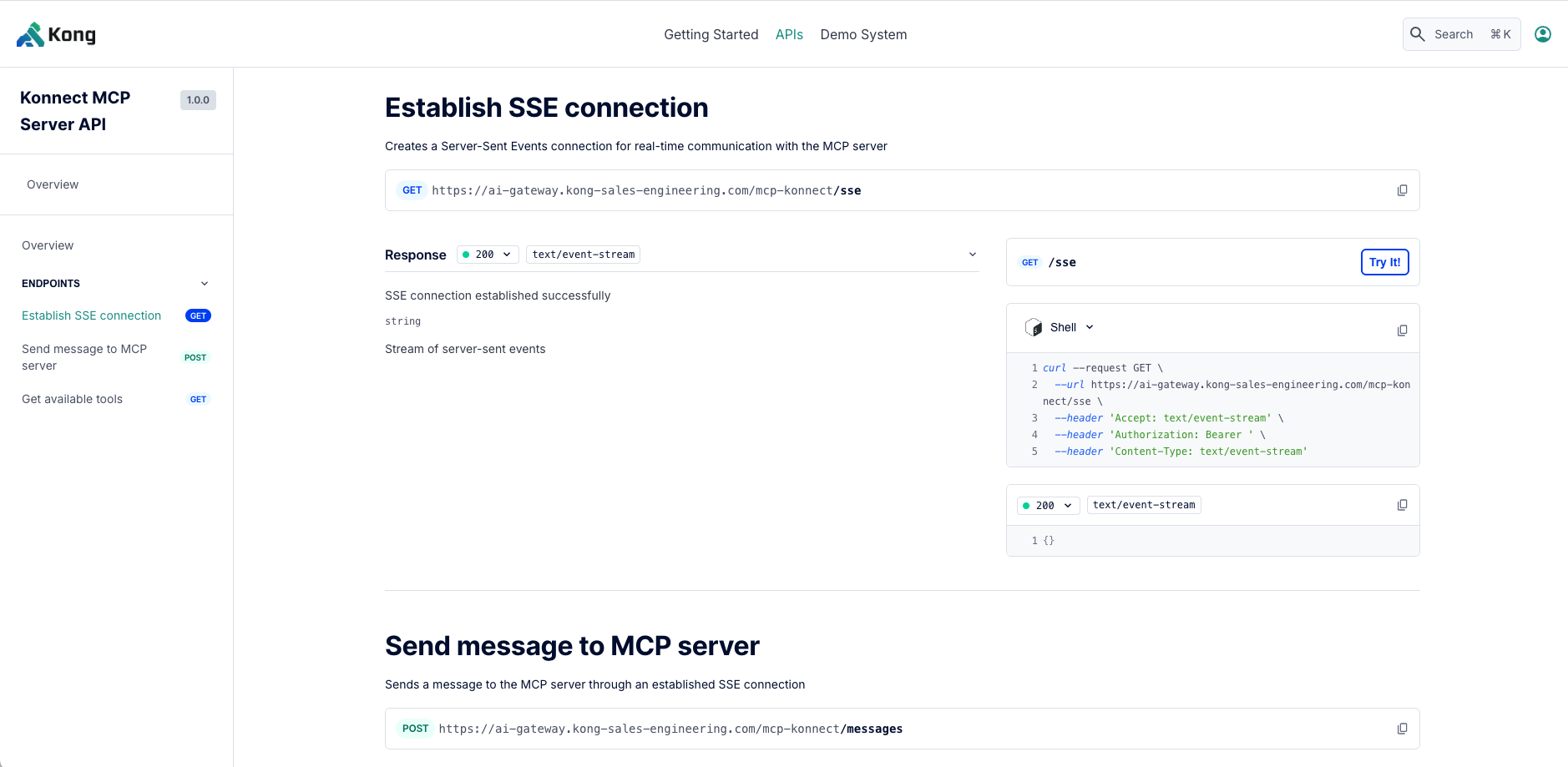Authentication plugins like OpenID Connect or Key Authentication can be used to standardize the authentication patterns at the edge. The authentication plugins can be extended to support fine-grained Authorization models via JWT claims or declarative Access Control Lists (ACLs).
After establishing consumer identity, Kong AI Gateway supports flexible policies for managing consumer quotas. The AI Rate Limiting Advanced plugin can be used to apply token-usage quotas, while the vanilla Rate Limiting Advanced plugin can support the more typical API request-based quotas.
The AI Gateway also provides the ability to apply flexible guardrails to centralize content moderation, using the AI Prompt Guard plugin for regex-based policies or the AI Semantic Prompt Guard plugin to enable smart guardrails with semantic reasoning. The AI Gateway also provides the ability to integrate with third-party services (see Azure Content Safety or the PII Sanitizer), giving ultimate control over how platform teams can ensure that all interactions will conform to the appropriate governance policies.
Finally, we want to ensure that the AI Gateway provides real-time visibility into model behavior, request flows, and performance bottlenecks — enabling faster debugging, improved reliability, and safer AI outcomes. Kong provides the tools necessary to achieve a robust security posture, leveraging log aggregation and modern standards like OpenTelemetry.
Let’s take a look at a real-life example of how Kong can empower AI-native applications to use MCP servers to add real-time intelligence to their workflows.
Example use case: Building an MCP-enabled chatbot
Kong recently announced the launch of an MCP Server for Kong Konnect — a unified SaaS platform for managing APIs, events, and LLMs across hybrid and multi-cloud environments. This empowers customers to integrate AI agents and query LLMs to discover and request details around APIs, services, and their associated traffic analytics.
Today, we’re going to use this MCP server to demonstrate the importance of a gateway when using MCP to integrate AI applications with additional tooling and resources.





